 |
|
| Home | DSW.Profile | Products | QualityControl | R&D Section | Inquiry | Managment | OEM/ODM |
| |
 |
| Minimum Protection |
| Use both Ionisation and Optical Smoke Alarms (Preferably interconnected) |
|||||||||||||||||||||||||||||||||||||||||||||||||||||||||||||||||
| Use both Ionisation and Optical Smoke Alarm (Preferably interconnected) |
|||||||||||||||||||||||||||||||||||||||||||||||||||||||||||||||||
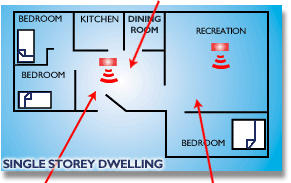 |
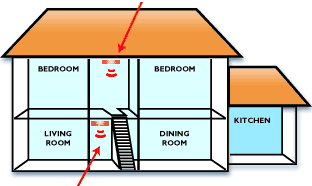 |
||||||||||||||||||||||||||||||||||||||||||||||||||||||||||||||||
| Ionisation Recommended |
Optical Recommended |
||||||||||||||||||||||||||||||||||||||||||||||||||||||||||||||||
| Optical Recommended |
TWO STOREY DWELLING | ||||||||||||||||||||||||||||||||||||||||||||||||||||||||||||||||
| For minimum protection the number of smoke alarms to be fitted will depend on the type of home you live in:
|
|||||||||||||||||||||||||||||||||||||||||||||||||||||||||||||||||
| |
|||||||||||||||||||||||||||||||||||||||||||||||||||||||||||||||||
| Maximum Protection | |||||||||||||||||||||||||||||||||||||||||||||||||||||||||||||||||
| Use both Ionisation and Optical Smoke Alarm (Preferably interconnected) |
Recommended Smoke Alarm with built in escape light |
||||||||||||||||||||||||||||||||||||||||||||||||||||||||||||||||
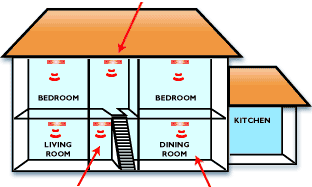 |
|||||||||||||||||||||||||||||||||||||||||||||||||||||||||||||||||
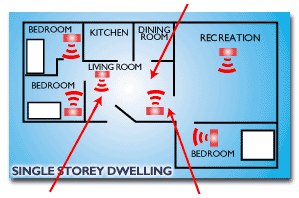 |
|||||||||||||||||||||||||||||||||||||||||||||||||||||||||||||||||
| Recommended Smoke Alarm with Silencer button |
|||||||||||||||||||||||||||||||||||||||||||||||||||||||||||||||||
| Optical Recommended |
|||||||||||||||||||||||||||||||||||||||||||||||||||||||||||||||||
| Recommended Smoke Alarm with Silencer button |
|||||||||||||||||||||||||||||||||||||||||||||||||||||||||||||||||
| Optical Recommended | |||||||||||||||||||||||||||||||||||||||||||||||||||||||||||||||||
| TWO STOREY DWELLING | |||||||||||||||||||||||||||||||||||||||||||||||||||||||||||||||||
| For maximum protection the number of smoke alarms to be fitted will depend on the type of home you live in:
|
|||||||||||||||||||||||||||||||||||||||||||||||||||||||||||||||||
| Photoelectric & Ionization Smoke Detectors |
Ionization Detectors Ionization detectors have an ionization chamber and a source of ionizing
radiation. The source of ionizing radiation is a minute quantity of americium-241
(perhaps 1/5000th of a gram), which is a source of alpha particles (helium
nuclei). The ionization chamber consists of two plates separated by about
a centimeter. The battery applies a voltage to the plates, charging one
plate positive and the other plate negative. Alpha particles constantly
released by the americium knock electrons off of the atoms in the air,
ionizing the oxygen and nitrogen atoms in the chamber. |
| Features ionization ventricle: | ||
 |
||
| Work principle ionization ventricle: | ||
| Ion ventricle can be classified into internal ion ventricle (reference ionization ventricle) and external ventricle (testionization ventricle), and their ionization radiations are provided by the same source. Under certain voltage, the internaland external ion ventricles are at a balance of the work electric current. Refer to Figure 1, point A is the electric currentbalance point of ionization in the clean air. While Figure 2 denotes that balance point moves to the point A?after enteringsmoke, the movement from point A to point A?leads to the change of the balance voltage of the collection electrode andthe change is enough to trigger alarm circuit to realize the destination of fire alarm. |
||
|
||
| Main specifications of ionization ventricle: | ||
| The balance voltage Un (9V) of the collection electrode: 4.7-5.3V The density of smoke Y(UN change under 1.5): 0.7-1.5V Work electric current of ion ventricle: 10-11-10-12A Activity of 241-Am-a: 0.7-0.8礐i Resistance of electrode direction insulation: >1013O Electric capacity: ~48F Maximum diameter: Height: 20mm Diagrammatic sketch of connection |
||
| Diagrammatic sketch of connection: | ||
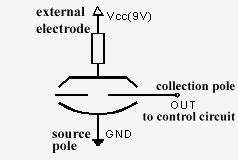 |
| Photoelectric Detectors |
1.It's a pretty big smoke detector. There would have to be a LOT of smoke before the alarm would go off --
the smoke would have to be thick enough to completely block out the light.
It takes quite a bit of smoke to do that. |
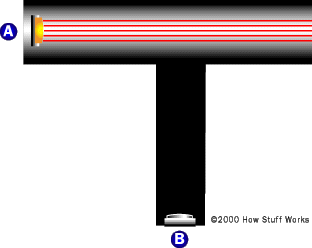
|
|
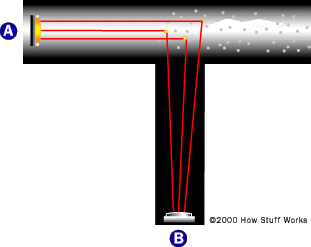
|
| The sensor then sets off the horn in the smoke detector. Photoelectric detectors are better at sensing smoky fires, such as a smoldering mattress. |
Address: Room1621 Linqiao Piazza, Ningbo City,315010, China |
Tel:
+86(574) 27861829 27861849 27861830
Fax: +86(574)87264906 |
E-mail:
[email protected] |
Copyright
©1995-2003 DSW Electronics Ltd. All rights reserved. |